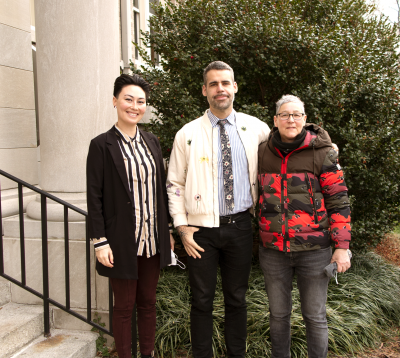Charlotte Joyner, Duke University

On Friday, January 28th, the department of Gender, Sexuality, and Feminist Studies and History Department welcomed Jack Halberstam, director of the Institute for Research on Women, Gender, and Sexuality at Columbia University for the Duke on Gender Colloquium, “The Natures of Desire: A Conversation on Queerness and the Wild”. Accompanied by Duke's Gabriel Rosenberg, the two led the discussion exploring topics of wildness, dismantling, and the potentially unexpected intersections of sexuality and the environment.
Halberstam recounted ideas from his book, Wild Things: The Disorder of Desire, describing the phenomenon of “wildness” and how it is defined within Euro-American perspectives. In Halberstam’s argument, “wildness” is the rejection of categorizations and stratifications of what is deemed “civilized”. It is defined within the parameters of patriarchy and domesticity, and therefore any noncompliance with these tools of the colonial system makes the nonconformist “wild”. Halberstam uses the context of wildness to explore queer identity as a “wild”, uninhibited sphere that rejects modern notions of heteronormative order and civility. Desire, attraction and sexuality become wild animal impulses that do not conform within modern industrial-capitalist classification.
Rosenberg cites "The Gaia Thesis" as a mechanism to understand the anthropocene as a repurposing of ecological systems and the consequent fallout as a sociopolitical collapse. Rosenberg, alongside Halberstam, rejects the imperial aesthetics of global renovation, particularly what he refers to as the “illusory antiseptics” of American supermarkets. His analysis then turns to the aesthetics of collapse as well as reconstruction. A world collapsing and rebuilding itself becomes a violent choreography, explored as an aesthetic of dance by Halberstam. Rosenberg ends by posing questions about the nature of collapse: “Is there room for a controlled demolition? Is there a way to slow the fall or cushion its force? Is this all or nothing?”